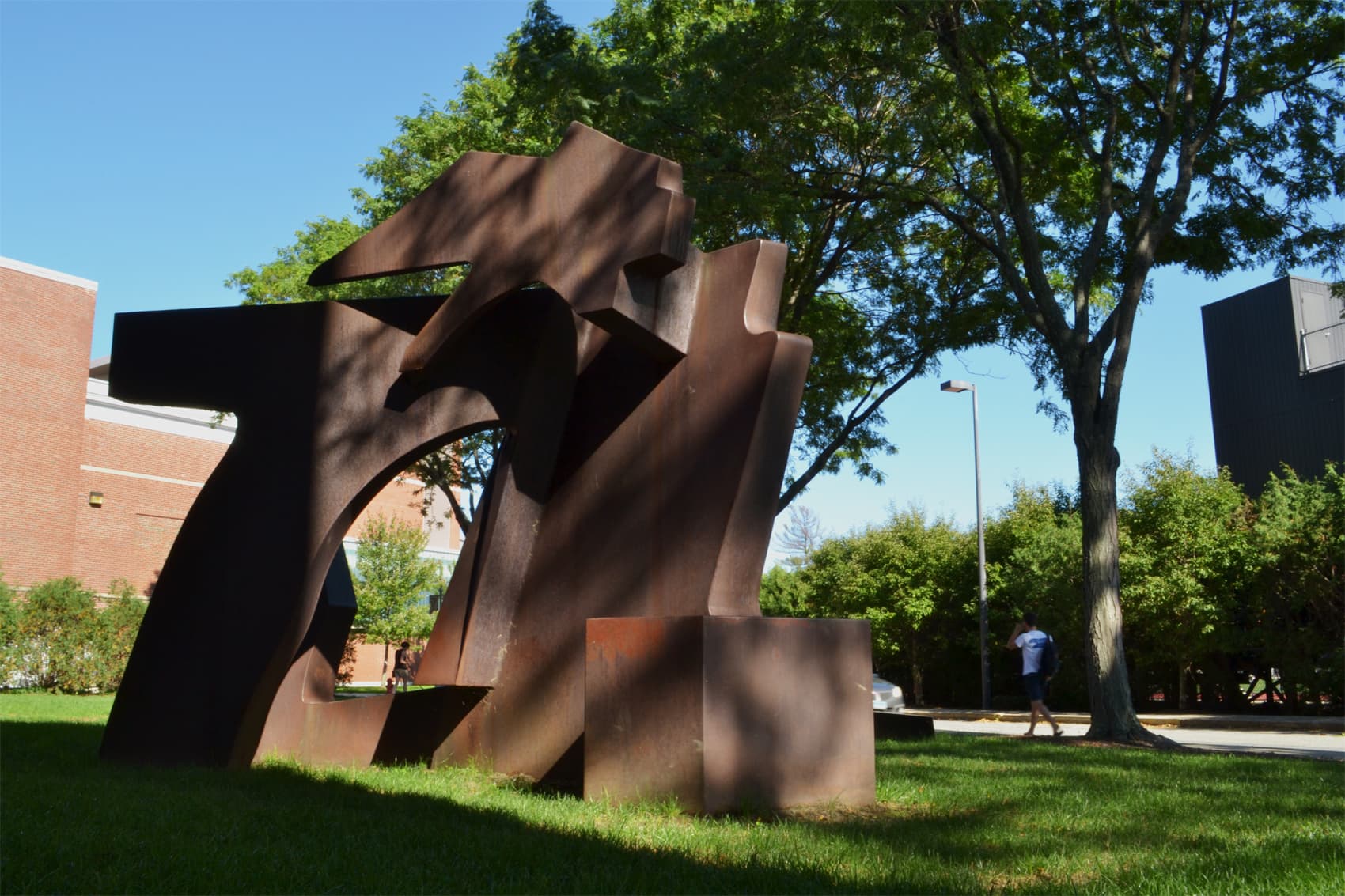Advertisement
Tufts Project Maps The Landmarks Of Black Boston

Boston is a city rich in American history. Tourists come here to explore the city's central role in some of the United States’ pivotal moments. But its historical narrative is whitewashed, often omitting the influence and accomplishments of the city's African-American community.
That’s according to Dr. Kerri Greenidge, who teaches history at Tufts University and the University of Massachusetts Boston. She specializes in the African diaspora in New England and the Northeast.
“If you have the same people tell the story, you’re not going to get recent scholarship that challenges the story we accept,” says Greenidge.
The narrative Boston has accepted, Greenidge notes, doesn’t exactly highlight the African-American influence and experience beyond slavery.
The Tufts Center for the Study of Race and Democracy, where Greenidge is on staff, wanted to help change that. So, together with the Tufts Data Lab, the center embarked on a mission to document significant sites that reflect local African-American history.
Greenidge and Dr. Kendra Field, the center's director, created a digital map that both tourists and curious locals could use to explore underrepresented but important events in the city’s history.
The African American Freedom Trail Project at Tufts University officially launched last year. Field and Greenidge hope it will provide the greater Boston area with a much needed service.
“There wasn’t, as there are in other cities, a kind of comprehensive clearinghouse in a digital form for all of these sites,” says Field.
Greenidge and Field acknowledge that they aren’t the first people to do this type of research; historians, including the late Tufts professor Gerald R. Gill, have been documenting these sites for years. Greenidge calls Gill the inspiration behind the African American Freedom Trail Project.

Dr. Pearl T. Robinson remembers the day. She was rushing through Tufts’ central grassy quad. She had somewhere important to be.
On her way, she ran into a fellow faculty member and friend: Professor Gill.
He asked if she’d seen the new tree planted by the Tufts Black Alumni Association.
“What are you talking about, Gerald?” Robinson said.
Gill led her to a sapling accompanied by a plaque. The tree celebrated black students at Tufts, both past and present.
And it was just one part of a larger trail project Gill was working on, he told his friend. The trail would link and document the presence of blacks on the university’s campus.
Gill asked Robinson if she wanted to tour the other sites.
“Gerald, I’m late,” Robinson said. “We’ll do it another time.”
But that other time never came. In 2007, Gill died unexpectedly at the age of 59.
Advertisement
Robinson didn’t want Gill’s vision of a university trail to die. He had been passionate about shedding light on the African-American influence at Tufts. And so was she. For years, she said, she strove to get her colleagues on board, bringing it up constantly at meetings. But she found, as Gill had, that it wasn’t easy to get full cooperation.
It wasn’t until 2014 that she piqued the interest of a new faculty member, Kendra Field.

Robinson told Field about Gill’s original plans for a Tufts black history trail, which he may have begun work on as early as 1988.
Throughout 2015 and 2016, Robinson, Field and Africana Center Director Katrina Moore worked together to try to reconstruct what Gill’s original trail might have looked like, adding recent sites along the way.
But even with Gill’s trail completed, Field knew there was still more work to be done if the African-American experience was going to become part of mainstream history.
“Kerri [Greenidge] and I kind of got to thinking there could be a larger role for a university like us to play in helping support a broader trail project,” Field said.
They had all the necessary resources available at the university, and they believed an expansion of the trail project could help educate community members and organizations.
Today, the trail features seven sites on the Tufts campus and over 100 throughout Greater Boston, ranging from large institutions to nondescript buildings. And that number will most likely keep growing.
Greenidge and Field see the map as a starting point for something bigger. They’ve led bus and walking tours, but funding these expeditions can be difficult.
That’s what Field believes is so great about making a digital map: The project has the potential for exponential growth.
Field and Greenidge don’t believe they’ve pioneered the research necessary to archive these sites. But their project makes Tufts one of the few major institutions in the area to collect and digitize the information in a single online resource.
With the help of other local African-American history institutions, such as the Royall House and Slave Quarters and the Heritage Guild, Tufts hasn’t only provided Bostonians with a resource. It has also connected people in the field.
“One of the things we are seeking to do is to connect all these different people who are doing the history but aren’t always plugged into each other,” says Greenidge.
It’s a way to promote collaboration and coordination among historians and researchers working toward the same goal: making sure the legacy of African-Americans in Boston becomes a larger part of the city's historical narrative.
“A lot of history has been erased, wittingly or unwittingly," says Field, "and this is an attempt to kind of fill in the past in a way that’s visible in the present moment.”
